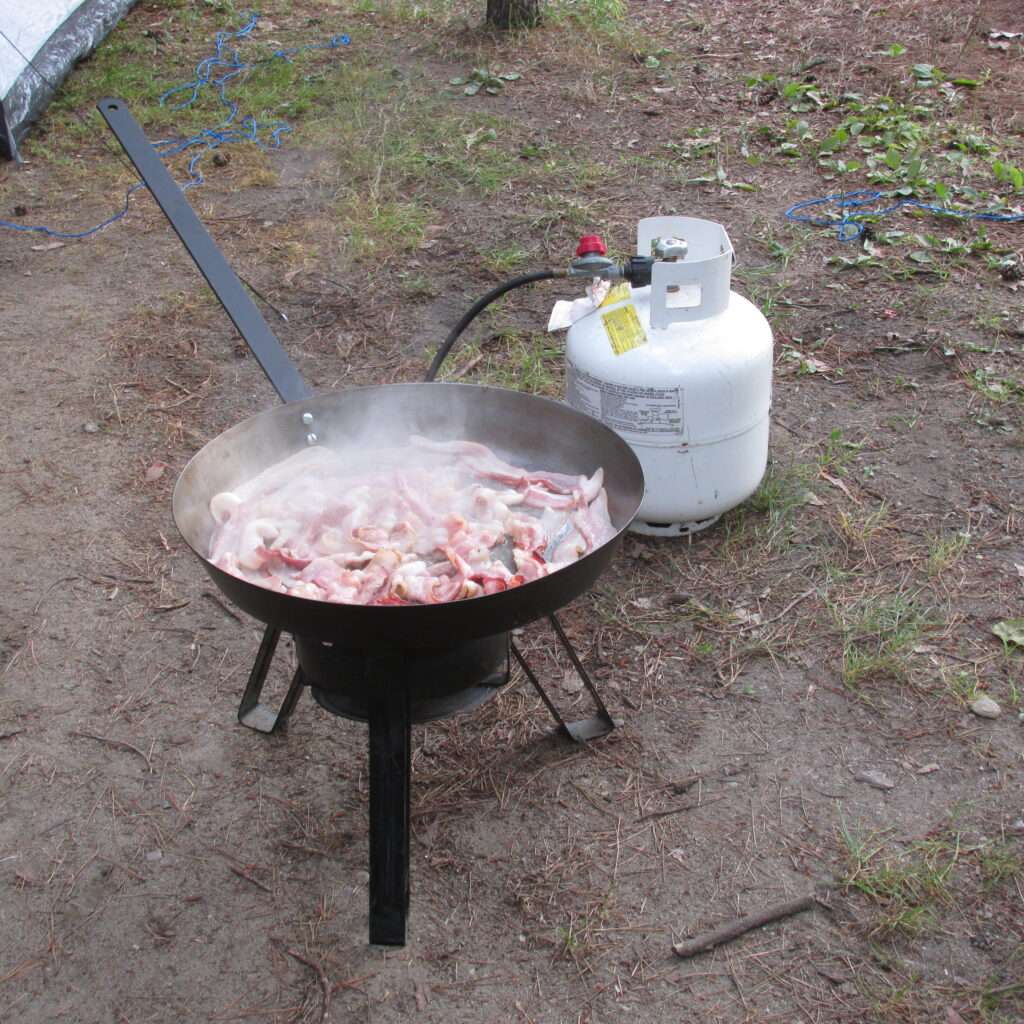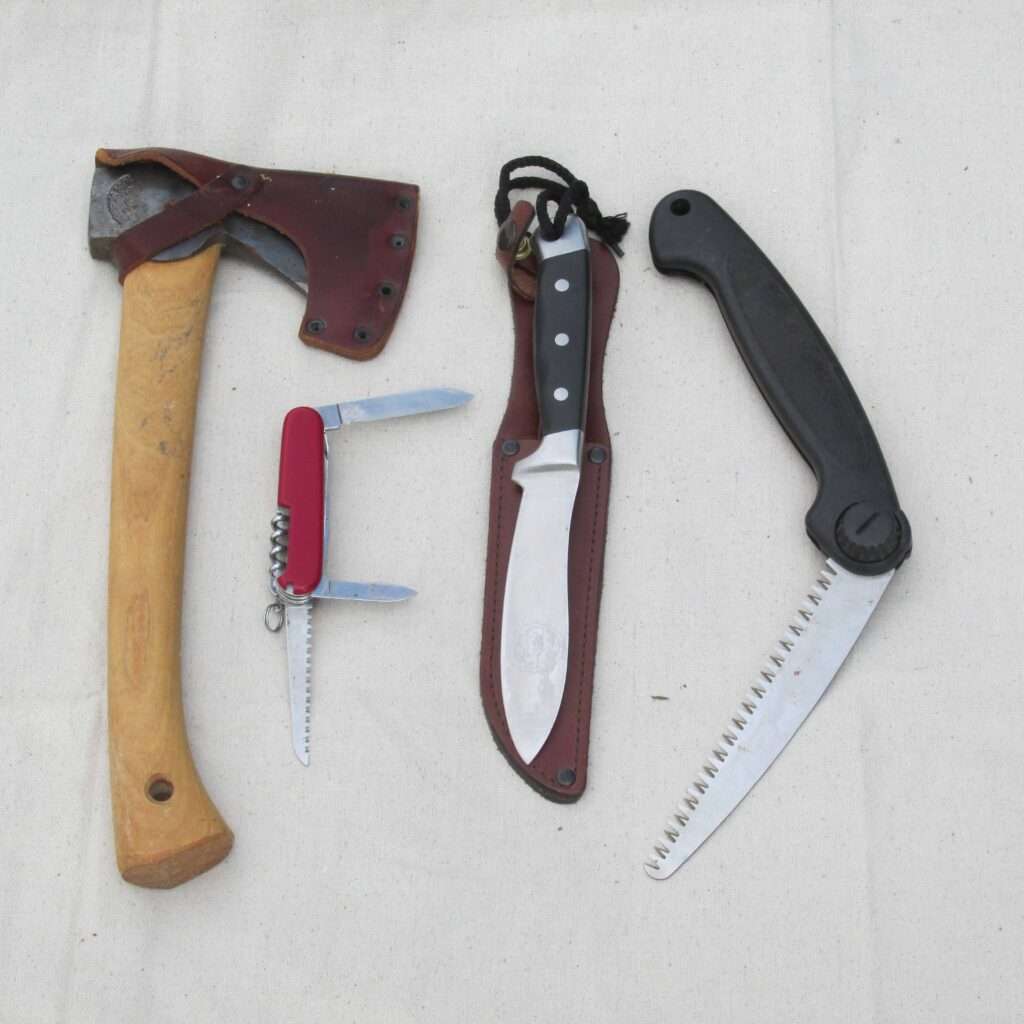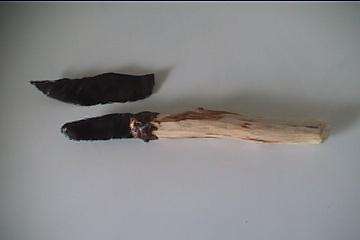Stages of Survival Training
In this article, I will give you the Gibbons
Guide to “What Survival Training Looks Like.”
One of the big problems with the words “Survival Training.”
is that it drives the testosterone level of the average
outdoors person through the roof. So, many of the
people out there base everything on a military
perspective. Luckily, Not all instructors or practitioners take
this approach! These instructors work in the world of community cooperation. I’m speaking as a U.S. Military Vet.
These nature oriented instructors understand that this is not a challenge course to prove your worth to them. Instead, these community-minded instructors get that it’s as much about personal achievement, self-sufficiency, and being part of a larger community. I can list a handful of these great instructors.
Some of them do have military backgrounds. Most of them are interested in Nature, Primitive Arts, Wild foods and Herbs. These instructors minimize the gear and learn to work with nature. I was not always of this mindset. Lucky for me, working with students of all ages can be a great teacher and inspiration. Life is about change and learning. It’s called personal growth.

I have made contact with many instructors over the years. Where do you find them? Wild food training programs, Native and primitive skills gatherings, and Flint knapping events. Competitive courses and events do have a place in this process. Navigation events are a great test of your skills. The test should be against yourself.
Don’t write off groups like the one Baden Powel fathered. These groups have a subset of native skills and outdoor community events. I spoke with the “Tracker” himself during one of these events.
The process presented here is not about (but can include) off-grid, homesteading, or permaculture. Learning these skills will greatly aid the pursuit of free and deliberate living.
Always obey laws and private property.
Let me break this down into the stages.
In other words, learn to crawl, walk, then Run!

Phase 1 – Learn to Camp
Start with Day trips on established trails:
- Go with a group or an experienced person.
- Take at least one First Aid CPR course.
- Pitch a tent and a Tarp in your backyard or Park (If allowed).
- Camp overnight in a safe place – Backyard or State campground.
- We call this car camping. It is where most people start.
- Improve your navigation skills (Map and Compass) – Take a course or dedicate time to the field.
- Learn how to select and produce Clean, Safe Drinking Water. As my wife says, “Find a reliable water source.”
- Camp with one or more people for at least seven weekends.
Three of those weekends need to be with a backpack.
Sleep under a Tarp on at least one of these trips. Try a Hammock and Tarp on one trip.
Don’t forget the Bug Net!
- Learn to safely use camping/backpacking stoves – alcohol, Propane / Butane, and White Gas.
- Learn to make safe campfires by using designated campsites.
- Learn to pack a backpack for a weekend – Including food and water.
- Fit it for comfort and carry it for a 1/4 of a mile.
- This pack needs to Include food and water.
- Learn the Rules of Trace Free Camping and practice them.
- Learn the safe rules for using a Knife, Ax, and Saw. Practice cutting up
- Firewood. Carve Chopsticks and use them. Carve a spoon and a Noggin Cup.
- Practice outdoor cooking:
1. Trail food – Try Trail Pizza and Brownies –
2. Campfire cooking using home pantry items (Chuckwagon food)
Make Tin Foil Dinners, Popcorn, and Twist Bread over a fire or in coals
Try using a reflector oven.
3. Dutch Oven Cooking – Bake, Braise and Lid Cooking
4. Outdoor Chinese wok use and steaming of foods
Make pancakes from a mix or scratch using a stove and campfire. This can be one of the most challenging skills for a new camper.
- Do an overnight or weekend in a safe area alone.
Bring a cell phone and or SPOT and tell someone where you are.
A state campground primitive sight is a great choice. Stay close to your car and have a bailout plan.
- Learn to Minimize your Gear list to a Light Pack, Food, and Water.
- Take a week-long camping trip.
- Winter Skills training and camping
- Learn to Fish
- Navigation with a map and compass
- Knot tying
- Build a Safe fire under any condition
- Backpacking
- Swimming
- Canoeing / Row / Sail
- Life-saving
- First Aid CPR
- Cooking Over Fire
- Cooking with a Stove / Backback cooking
- Group Sanitation and individual
- Sleeping Comfortably and Safely
- Learn to use Basic Wood Tools
- Small group leadership or cooperation
- Nature Study and Identification
- If possible, winter camping
- Add to this Desert and Riverdine / Swamp Camping
Nature Studies: Weather, Astronomy, Plant Identification, Tree Identification
Most of this I learned on my Eagle Scout Trail. I also learned many of my Bushcraft skills as well.
John Elden Gibbons
“If you are opposed to the taking of game or eating meat, then skip that part and find like-minded people! It’s your journey.“
John Elden Gibbons
My family makes it a point to eat vegetarian at least one or two meals weekly.
Many people in the sailing community find that eating vegetarian during part of the trip saves on expenses, refrigeration, and cooking times Fishing can help add to their diet but is not an option in bad weather.
The program that I worked with had three stages for the 24 residents.
Pre-Phase – One month of in-house training and adjustment.
Phase 1 Day Trips Twice Per Week (30 days)
Phase 2 Weekend Trips – Total of four trips in 30 days
each trip was 48 Hours – Sat morning to Mon Morning
Phase 3 Expedition – 30 days in the woods.
Resupply and showers with clean clothing every 3-4 days
Depending on the shift agreement, the Staff would route out on resupply or stay.
The Last Weekend was a Solo experience for two nights. Staff brought all food and
maintained regular check-ins six times per day. Participants were not allowed to leave the tarp area.
They could signal by whistle if needed and were only 100 yards from Staff or other participants.
The time was spent Journaling. These areas were remote. The Staff was centrally located.
This program operated 365 days per year.
All trips combined camping with Mountain Climbing, Rock Climbing, Rafting, Canoeing, Caving, Skiing, Snow Shoeing, and High and Low Ropes Courses.
The standard was participants, and Staff would be pulled out if the temperature dropped to -20 or lower. We had great equipment, and sometimes the temperature dropped, and we stayed out because it made no sense to come in. We also had SAT Phones and support vehicles.
The school was expected to be continued at this time. Most participants raised their reading level by one or two grade levels in the four months.
The program that I work in for NYS was all about camping and did not allow for survival / bushcraft skills for this population.

Phase 2: Bushcraft Skills
- Survival Kit Construction and Use
- Safely camp overnight using only your kit. (bring camping gear as a bailout.)
- Shelter Making – using tarps or natural materials
- Natural Navigation
- Map Making in the Field
- Fire Making using Natural material, Spark, chemical, and solar ignition
- Bushcraft Shower and Toilet Construction
- Pioneering skills with Lashing and construction
- Using Machines or levers made from rope or poles.
- Cabin or Lean-to construction
- Understanding of Traplines and Trapping methods
- Air Rifles or Black Powder Use and Proficiency
- Learn to use and shoot a Bow and Arrow
- Build a Bushcraft Kitchen
- Build a Tee-Pee or Yurt and spend the night or longer in it.
- Learn to Process Game
- Make a permanent camp using pioneer methods – Needs to be on your own land or approved land (groups or cooperative clubs)
Advanced Studies: Tracking, Wild Crafting (Wild Foods), Frontier or Pioneer Construction Methods.
If anyone tries to tell you that there were no repeating arms during the birth of our nation, prove them wrong by showing them “Lewis and Clark’s Air Rifle.” This rifle was capable of shooting 20 rounds in succession. It was as fast as any modern semi-auto.
An Air Rifle can take most small Game in the USA and some medium-sized Game. Add the bow and arrow or a crossbow to this, and you can take Wild Game anywhere in the USA. But let’s be honest, a charging bear is a different matter!

Phase 3: Primitive Skills
- Primitive Cooking
- Learn to make cord and rope from natural materials
- Flint Knapping
- Indigenous shelters
- Herbs and their use
- Bow and Primitive weapons making
- Learn to make clothing, baskets, and footwear from nature
- Knife Only overnighter/weekend – Bring bailout gear
- Learn to make the Knife
“It sounds like a lifetime of learning. It is!
John Elden Gibbons
Finally, Teach others. This is by far the best way to own your skills.“